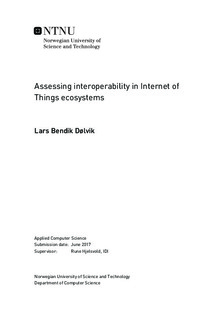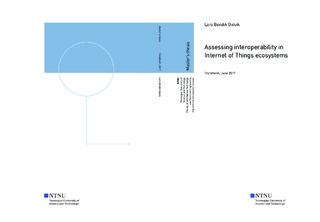| dc.description.abstract | The Internet of Things has been a familiar term for quite some time. Connecting devices to track, monitor, enhance, augment and interact with the real world have opened doors for new services which previously was not possible. This has lead the industry stakeholders to see the current and future potential of the industry. This has resulted in a rapid growth of connected devices and application services. These devices are often connected to an Internet of Things ecosystem. An ecosystem allows devices to interact and exist within the same environment, being controlled by an application. The service providers often either choose to provide their own ecosystem, to ensure that all their products can interoperate within the environment, or support an existing ecosystem. This has resulted in an industry with devices and applications only being compatible with specific ecosystems. Because of this, the Internet of Things has an interoperability problem.
This thesis has assessed the interoperability of three ecosystems provided by industry leading corporations and foundations. The goal of this assessment was too determined whether or not the ecosystems provided end-to-end interoperability, to compare strengths and weaknesses, and how the technological and architectural foundation of the ecosystem affect its stakeholders. The assessment has been conducted according to the Criteria-based Assessment Model. With this model, the ecosystems have been assessed and compared in detail. The information and data assessed was obtained through both a qualitative study of the ecosystems documentation and development experiments.
The results show that the all ecosystems provides end-to-end interoperability, and that they do it in a similar way. Even though they are built with similar architectures they support different operating systems and transports. The technological and architectural differences have proved to restrict integration of devices and services, denying potential interoperability. These differences also affect the stakeholders and restrict them to only provide devices and applications according to the ecosystems supported technologies. This further shows that the ecosystems give the stakeholders a lot of responsibility when building an interoperable system. | |

